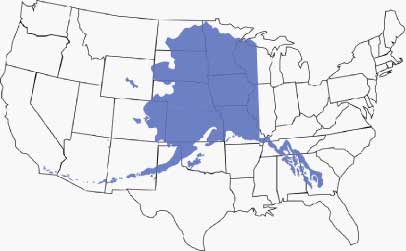Frequently Asked Questions
What kind of deaths are included in the database?
The AKVDRS is an active surveillance system that collects risk factor data concerning all violent deaths as follows:
- Homicide
- Suicide
- Accidental Firearm related
- Legal Intervention (Police-related shootings)
- Acts of Terrorism
- Undetermined and pending
How do you locate your targeted deaths for inclusion into the database?
The Bureau of Vital Statistics provides information from their death certificate database using the following ICD-10 codes for external causes of morbidity and mortality:
- X60-X99
- Y00-Y09
- Y10-Y34
- Y35-Y35.4
- Y35.6-Y35.7
- W32-W34
- U01
- U03
- And additional ICD10 codes for deaths >1 year after injury (Y87.0-Y87.2, Y89-Y89.9, Y86 (if firearm related) and U02
What do you do with the data?
Information in the source documents is abstracted and entered into the AKVDRS database where it is available for the program staff to analyze over 700 individual data variables per incident to give the data providers, data users, and advisory members an in-depth view to violent death in Alaska, i.e. to whom and how it is happening and the relationships between victim, suspect and weapons. AKVDRS data can then be used to target trends and patterns that potentially may be of concern to law enforcement, public health and others.
Dissemination of AKVDRS data include annual state-wide reports on violent deaths in Alaska, web based statistic reports, and public presentations to describe how violent death in Alaska compares with violent death across the nation.
What are the primary data sources?
The primary AKVDRS data are derived from the following key data sources:
What are the unique challenges for the AKVDRS?
Alaska law enforcement agencies often face unique cultural, environmental, geographical and jurisdictional issues when conducting investigations and archiving of case files. These issues include:
- Vast, undeveloped expanses with 656,425 square miles of land; 6640 miles of coastline; population density of ~1.0 person per sq. mile
- Rough terrain and limited transportation infrastructure (water, air, land) that complicate discovery, recovery and investigation of deaths
- Records for each death must be located depending upon state and tribal authority, requested and then abstracted in a timely manner

What about confidentiality?
The AKVDRS program understands the value of the data that are entrusted to it and has developed security protocols to ensure the data are maintained in a secure and proprietary manner. Only fully adjudicated records are entered into the database thereby ensuring no legal cases pending before the courts are compromised.
Transmitted data for inclusion into the NVDRS database are stripped of all personal identifiers before transmission.
Analysis of the data is done with aggregation and statistical tools to ensure the data are accurate and representative of Alaska populations, yet in a manner that no one individual or incident is identifiable to the data users.
What is the Status of the AKVDRS?
- The AKVDRS is funded under a Cooperative Grant Agreement with CDC to maintain and improve the state-based violent death reporting system.
- The AKVDRS collects information related to victim(s) and suspect(s) including circumstances and environmental factors such as domestic violence, intimate partner violence, abuse/neglect, and drug overdose.
- The AKVDRS has published several summary bulletins and reports that includes information on child fatalities (0-17 years of age) and accidental firearm fatalities.
- The AKVDRS staff have participated in the development of several articles and publications including MMWR articles and other public health publications detailing violent death across the NVDRS states.
- The AKVDRS staff have participated in and presented AKVDRS data at several local, national, and international injury prevention conferences.
- The AKVDRS in conjunction with the advisory group members and other data users are exploring the use of additional data fields to collect and analyze state specific data elements.
How do I obtain more information about the National Violent Death Reporting System?
For questions about the National Violent Death Reporting System, please visit CDC's NVDRS Frequently Asked Questions.
For more information about the AKVDRS, please contact:
Ashley Hannigan, Epidemiology Specialist 2
Interim AKVDRS Program Coordinator
3601 C Street, Suite 540
Anchorage, AK 99503
907-269-8080
907-269-2041 (fax)
Epi-Injury@alaska.gov
